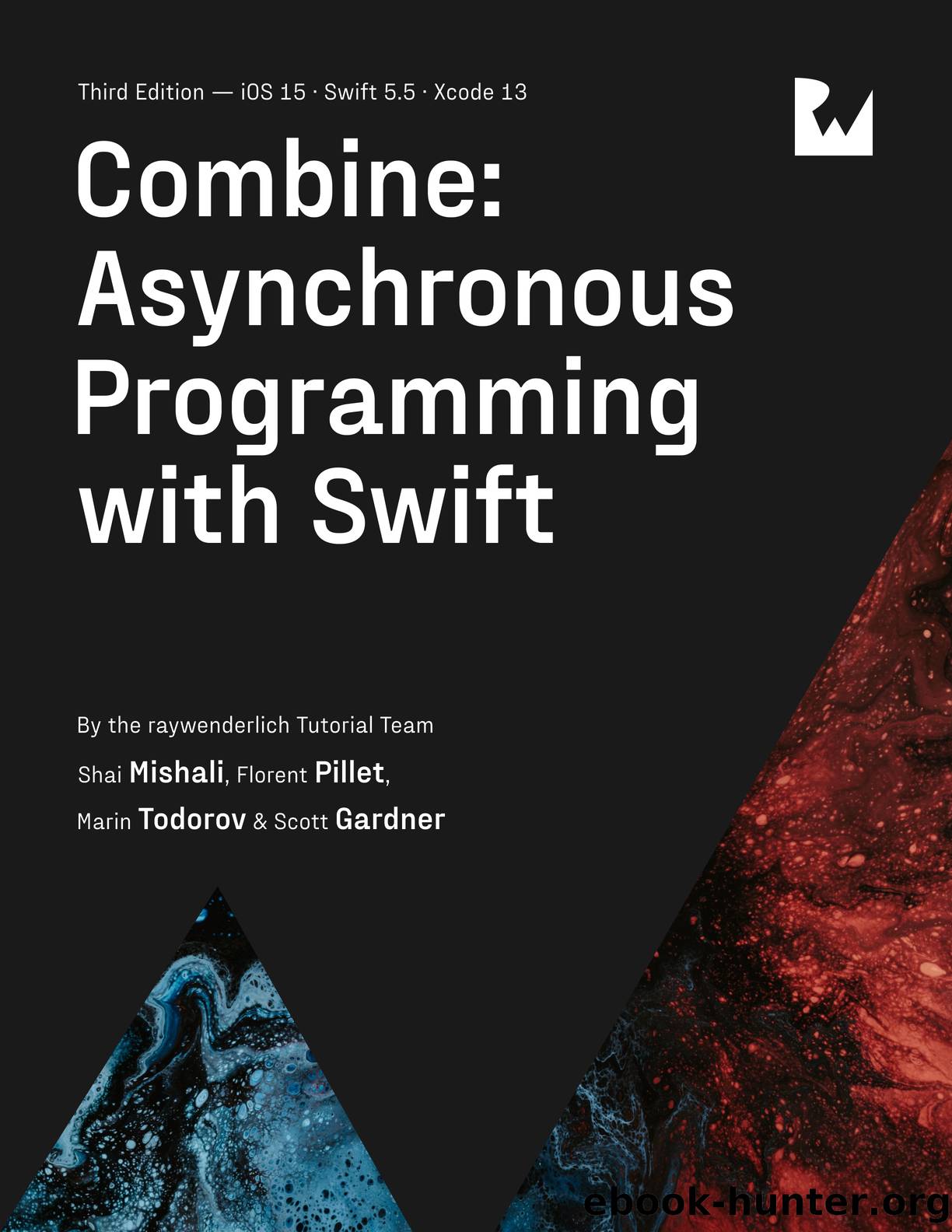Combine: Asynchronous Programming with Swift by By Marin Todorov & By Shai Mishali & By Florent Pillet

Author:By Marin Todorov & By Shai Mishali & By Florent Pillet
Language: eng
Format: epub
Publisher: Ray Wenderlich
To put this concept into practice, imagine youâre performing a network request, like you learned how to do in Chapter 9, âNetworking.â You want multiple subscribers to receive the result without requesting multiple times. Your code would look something like this:
let shared = URLSession.shared .dataTaskPublisher(for: URL(string: "https://www.raywenderlich.com")!) .map(\.data) .print("shared") .share() print("subscribing first") let subscription1 = shared.sink( receiveCompletion: { _ in }, receiveValue: { print("subscription1 received: '\($0)'") } ) print("subscribing second") let subscription2 = shared.sink( receiveCompletion: { _ in }, receiveValue: { print("subscription2 received: '\($0)'") } )
The first subscriber triggers the âworkâ (in this case, performing the network request) of share()âs upstream publisher. The second subscriber will simply âconnectâ to it and receive values at the same time as the first.
Running this code in a playground, youâd see an output similar to:
subscribing first shared: receive subscription: (DataTaskPublisher) shared: request unlimited subscribing second shared: receive value: (303425 bytes) subscription1 received: '303425 bytes' subscription2 received: '303425 bytes' shared: receive finished
Using the print(_:to:) operatorâs output, you can see that:
The first subscription triggers a subscription to the DataTaskPublisher.
Download
This site does not store any files on its server. We only index and link to content provided by other sites. Please contact the content providers to delete copyright contents if any and email us, we'll remove relevant links or contents immediately.
Hello! Python by Anthony Briggs(9912)
OCA Java SE 8 Programmer I Certification Guide by Mala Gupta(9795)
The Mikado Method by Ola Ellnestam Daniel Brolund(9777)
Algorithms of the Intelligent Web by Haralambos Marmanis;Dmitry Babenko(8295)
Sass and Compass in Action by Wynn Netherland Nathan Weizenbaum Chris Eppstein Brandon Mathis(7778)
Test-Driven iOS Development with Swift 4 by Dominik Hauser(7762)
Grails in Action by Glen Smith Peter Ledbrook(7696)
The Well-Grounded Java Developer by Benjamin J. Evans Martijn Verburg(7557)
Windows APT Warfare by Sheng-Hao Ma(6818)
Layered Design for Ruby on Rails Applications by Vladimir Dementyev(6547)
Blueprints Visual Scripting for Unreal Engine 5 - Third Edition by Marcos Romero & Brenden Sewell(6414)
Secrets of the JavaScript Ninja by John Resig Bear Bibeault(6409)
Kotlin in Action by Dmitry Jemerov(5062)
Hands-On Full-Stack Web Development with GraphQL and React by Sebastian Grebe(4316)
Functional Programming in JavaScript by Mantyla Dan(4037)
Solidity Programming Essentials by Ritesh Modi(3992)
WordPress Plugin Development Cookbook by Yannick Lefebvre(3782)
Unity 3D Game Development by Anthony Davis & Travis Baptiste & Russell Craig & Ryan Stunkel(3723)
The Ultimate iOS Interview Playbook by Avi Tsadok(3699)
